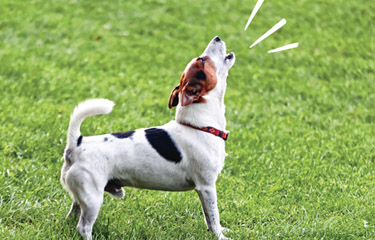Solutions for Common Dog Behavior and Training Problems
 Having a dog is something that many of us find fun. They have become a faithful companion and in many cases they end up extending our family because of how close we are to them. But, that doesn't mean that there are no problems which could occur when you own these furry babies. In fact, dog ownership comes with a great responsibility, just as it is raising a child. Dogs can require even more responsibility than other pets. There are many different types of problems that can crop up when it comes to owning a dog. In this post, I will discuss the solution to common dog behavior and training problems.
Having a dog is something that many of us find fun. They have become a faithful companion and in many cases they end up extending our family because of how close we are to them. But, that doesn't mean that there are no problems which could occur when you own these furry babies. In fact, dog ownership comes with a great responsibility, just as it is raising a child. Dogs can require even more responsibility than other pets. There are many different types of problems that can crop up when it comes to owning a dog. In this post, I will discuss the solution to common dog behavior and training problems.Common Dog Behavior Problems
Dog Aggression
Solution: Reasons for dog aggression are mostly the same as the reasons a dog will bite or snap, but dog aggression is generally a far more serious problem. Knowing what triggers the aggression is the first step in learning how to stop dog aggression. In terms of food aggression, this can be corrected by teaching your dog to associate food with positive experiences, such as being given a treat after being sat down. It is important to consult your veterinarian first if your dog shows aggressive tendencies since this may stem from a health problem. Then seek the assistance of a professional dog trainer or behaviorist. Serious precautions should be made to protect other from aggressive dogs.
Barking

Dogs vocalize in one way or another, they can howl, bark, whine and more. Barking is perhaps one of the most frequently complained when it comes to dog behavior problems. Dog barking is a very common behavior problem that causes dog owners serious grief. It annoys the neighbors, scares away the postman and causes neighborhood unrest and sometimes lawsuits. The most common reasons dog bark is for Warning or alert, Attention-seeking, Playfulness and excitement, Anxiety, Boredom, or Responding to other dogs.
Solution: You can control excessive barking by teaching your dog the bark/quiet commands. Be consistent and patient. Address the underlying causes of the barking. Dedication and attention to detail can go a long way in stopping your dog from barking.
Begging:

This is common behavior problem with dogs. Begging can lead to obesity and digestive problems. This is a very difficult habit to break. If you are looking for a solution to this problem, you have come to the right page. Remember that dogs are not born with this problem, they learn from their owners. I mean, every time you put some kind of human food under your dog nose during your meals, he becomes a slave to that taste. If you try to stop him for a moment, his begging mood will increase and it will create a nuisance in the form of growling, barking, pawing and whatever he can do to attract your attention.
Solution: When you teach your dog that begging is allowed, you are sending the wrong message. Before you sit down to eat, tell your dog to go to his place, preferably where he can't stare at you. If necessary, place the dog in another room. If the dog is misbehaving, give him a special treat only after you and your family has finished eating.
Inappropriate urination and defecation:

Dogs are really fun to be with, but dog problems can also be very annoying. Inappropriate urination and defecation, for instance, is a common problem, and it can be very frustrating. Lack of training, anxiety, and territorial marking can prompt a dog to urinate or defecate on your floor or rug. It can destroy areas of your house and make your dog unwanted in other people's homes or public places.
Solution: It is important that you first discuss this behavior with your vet to rule out health issues. This problem is unavoidable in puppies, particularly before 12 weeks of age. Many dogs require serious behavior modification to break the habit once it takes hold. This is something you want to change quickly before it becomes a housebreaking problem. First and foremost, your dog needs to understand that urinating indoors is not acceptable. Mildly corrects your dog if you caught him urinating in the wrong place. Take the dog to appropriate areas at times when urination is necessary. Reinforce acceptable behavior with a lot of praise or treats and reward when it urinates or defecates at the right place.
Common Dog Training Problems and Solutions
Jumping Up:

Eighty-five percent of dog owners worldwide are having trouble getting their dogs to stop jumping. So many dogs jump on their friends and family when they come back home. Dogs jump because they are social creatures and want to greet us, putting their entire body into it. They jump in the air or stand up on their hind legs, often placing their paws on a person's torso or legs. Jumping poses a risk of falling and getting hurt. Some dogs can jump so hard that they can actually harm someone. The risk is increased if the person being jumped on is a baby, kid, elderly, or otherwise vulnerable. Also, jumping can look rude to guests and dirty feet can stain clothes.
Solution: The first step in getting a dog to stop jumping is to take the emotion out of these kinds of events. Let your dog know that they receive no attention for jumping on you or anyone else. Reward your dog for alternative behaviors such as sitting or fetching a toy, make these the best way for saying hi. Small treats and attention can be given in quick succession as a reward for being calm, while jumping will receive no attention at all.
Not Coming When Called:

The surprising thing about this problem is that a large percentage of dog owners do not see this as a serious training problem until their dog starts playing up and presents the negative behavior pattern of not coming when called. A dog is at risk when he doesn’t come when called, and when he is off-leash, restraint becomes difficult. Coming when called is a life-saving behavior that all dogs should know about. It can move them immediately to safety in an emergency situation. It also makes it easy to interrupt and redirect unwanted behavior. It gives the owner the ability to move around and then restrain the dog when needed.
Solutions: Teaching your dog to come is a very important part of the training process. You can teach your dog to come when called if you are ready to put in the effort and time that it will take. Make coming when called an exciting opportunity for your dog to earn many rewards, which include high-value treats, toys, chews or a game of chase. When he come, praise and reward your dog with a high-pitched, happy voice. Your dog will be more likely to come the next time you call if you do this.
Pulling on the Leash:

This is the most common problem among dogs regardless of their size, and it is one of the problems most dog owners face. It can be very frustrating for your dog to pull on the leash when you take him for a walk. The main reason dogs pull is to get to where they want to go. Constant pulling can damage your dog's neck and trachea. Pulling also creates a fall hazard for the handler and reduces the handler’s ability to keep himself and his dog safe.
Solution: Anti-pull or no-pull dog harnesses can significantly reduce or even eliminate the problem. Harnesses are generally a great choice for dog walking because they take the pressure off your dog's neck and give you more control. You can also train your dog to know that pulling on the leash immediately stops the walk, while slack in the lead allows movement again. Stop walking as soon as the lead starts to tighten, Stay still, don't move and keep quiet until the lead is slack.
Conclusion
When it comes to solving dogs’ behavior and training problems, there are a few things to keep in mind. First and foremost, be patient. It can take some time to get your dog to respond to your commands and learn new behaviors. Second, be consistent. You need to provide the same rewards and punishments for the same behaviors in order for your dog to understand what you want from them. Finally, be creative. There's no one right way to solve any given problem, so be open to trying different approaches until you find one that works best for you and your dog. And if you are looking for a complete guide that can help you raise a perfect dog with love, click here to Amazon for Dog Training Revolution.












No comments: